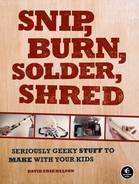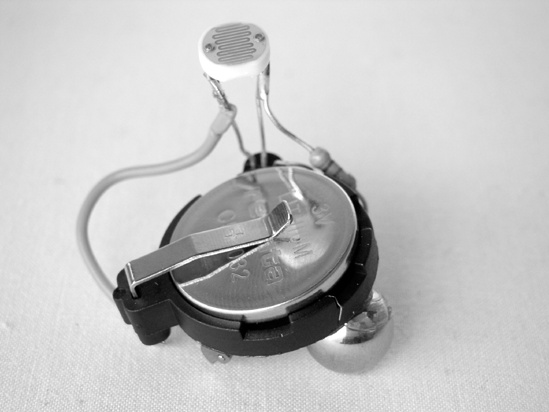Once upon a time, robots were either the fantastic, fully functional artificial humans of popular fiction (e.g., C3PO, the Terminator, Robby the Robot, Johnny 5) or the mundane workhorses of industry (e.g., discorporate robotic arms riveting Ford frames and powder-coating jet turbines). In either case, they were the expensive territory of PhDs and film producers. Fortunately, in the last two decades there’s been a surge in small, cheap, robust little robots: BEAM robotics.[14]
BEAM enthusiasts focus on designing small robots without general microprocessors. Instead of analyzing their surroundings and incoming stimuli (like higher-order ani mals), BEAM robots behave like simple multicellular organisms: Stimuli (like light, vibrations, or noise) directly trigger simple circuits that control actions, without the need for any sort of higher signal processing or self-reflection—like a reflex arc. BEAM designs often repurpose and recycle technological detritus and use novel power sources.
The Jitterbug is a very, very simple battery-powered photophobic robot. Much like a cockroach, it scurries around when a light is shined on it, coming to rest when it once again stumbles into darkness’s loving embrace.
a standard soldering kit (See the appendix.)
room temperature vulcanizing rubber or any silicone-based household glue
[14] This acronym is somewhat disputed, but according to Mark Tilden, who purportedly coined the term in 1990, it stands for Biology, Electronics, Aesthetics, and Mechanics.

